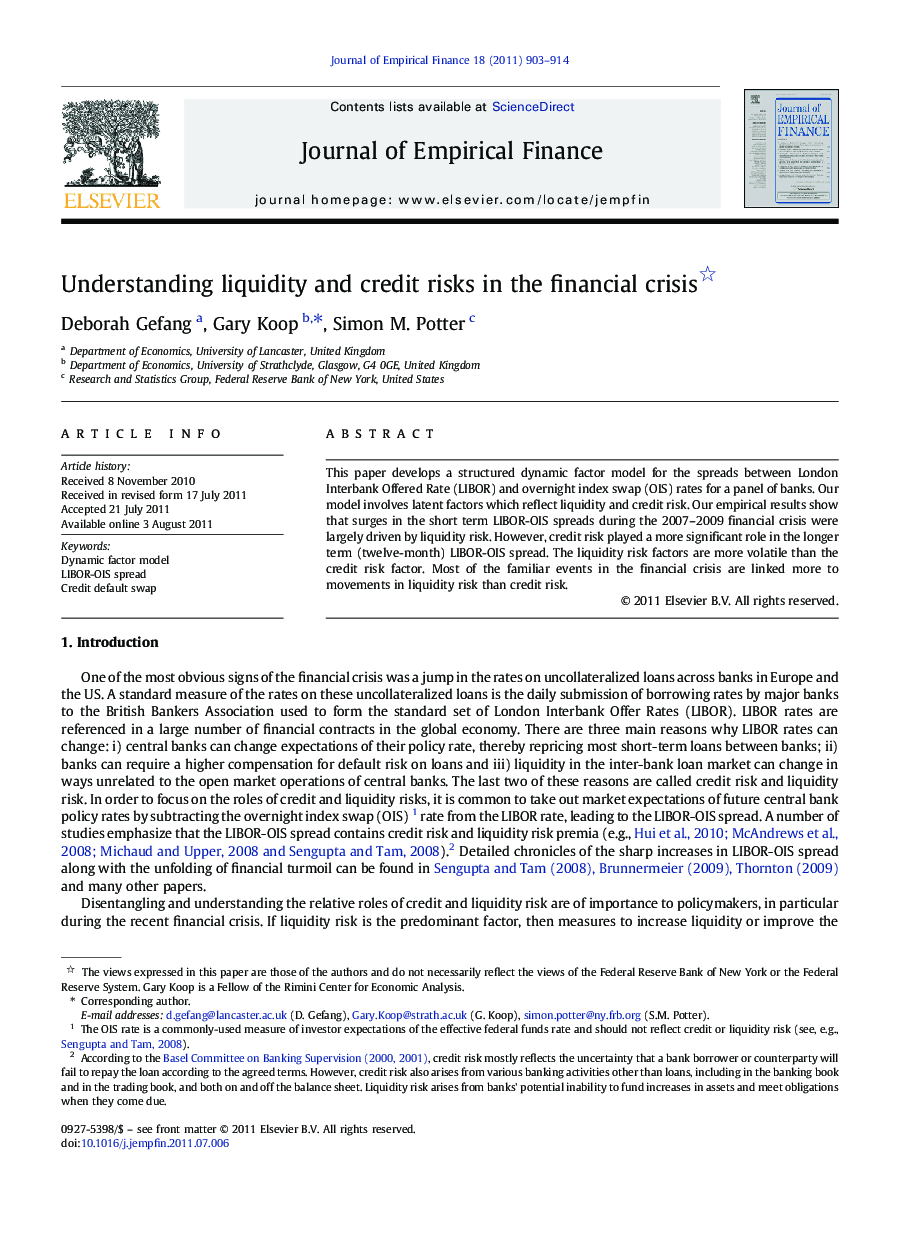| Article ID | Journal | Published Year | Pages | File Type |
|---|---|---|---|---|
| 958290 | Journal of Empirical Finance | 2011 | 12 Pages |
This paper develops a structured dynamic factor model for the spreads between London Interbank Offered Rate (LIBOR) and overnight index swap (OIS) rates for a panel of banks. Our model involves latent factors which reflect liquidity and credit risk. Our empirical results show that surges in the short term LIBOR-OIS spreads during the 2007–2009 financial crisis were largely driven by liquidity risk. However, credit risk played a more significant role in the longer term (twelve-month) LIBOR-OIS spread. The liquidity risk factors are more volatile than the credit risk factor. Most of the familiar events in the financial crisis are linked more to movements in liquidity risk than credit risk.
► A structured dynamic factor model for LIBOR-OIS spreads is developed for a panel of banks. ► The model involves latent factors which reflect liquidity and credit risk. ► Empirical results show that surges in the short term LIBOR-OIS spreads during financial crisis were largely driven by liquidity risk. ► Credit risk played a more significant role in the longer term (twelve-month) LIBOR-OIS spread.
